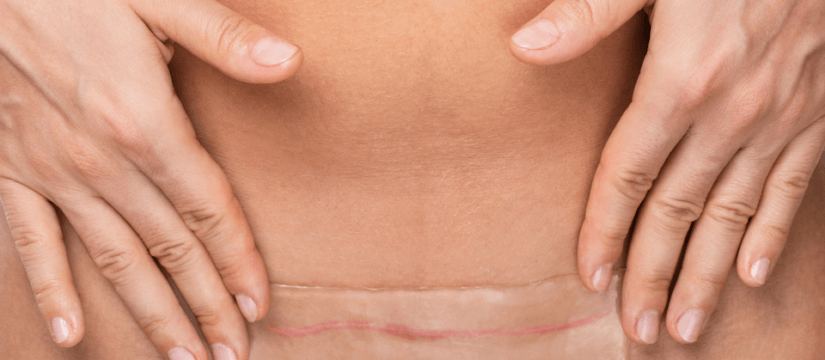
Cesarean sections account for 20% of births worldwide, and the total number of Cesarean deliveries is rising. The good news is that mortality rates for both mothers and babies have gone down significantly. The flip side is that moms have to live with the consequences of surgery.
Chronic Post-Surgical Pain After Cesarean Section
Pain is what most mothers expect to experience during pregnancy and childbirth. And you might assume that pain would eventually go away once you recover from childbirth.
Chronic post-surgical pain (CPSP) is a complication of Cesarean section and occurs in 23% of mothers that undergo this surgery. The reason you develop chronic pain is unclear, but there are a few factors that are associated with developing CPSP after C-section:
- Intense, uncontrolled pain after surgery
- Smoking
- High anxiety before surgery
What other risk factors can contribute to my chronic pain?
Chronic pain is challenging to treat, but if you understand the risk factors contributing to CPSP after C-section, you can address them. CPSP results in a decreased quality of life, affecting your daily activities such as lifting your newborn, bending over to change diapers, or pushing a stroller around.
Other factors contributing to CPSP after general surgery include having surgery at a young age, type of surgical technique used, type of anesthetic used, your genetics, and your psychological state. Anxiety, depression, and catastrophizing your condition can increase your chances of developing CPSP.
Can scar tissue from my Cesarean section cause pain?
Adhesions can form during C-section recovery, which leaves fibrous tissues that abnormally connect internal organs and the surrounding soft tissues to stick to each other. Scar tissue has been found in at least 32% of women after C-section.
You can experience persistent pain and discomfort as a result of adhesions. Often this discomfort or pulling sensation in your lower abdomen can change how you move and complete your day-to-day activities.
Scar tissue can also negatively impact the way your body systems work and can lead to:
- Urinary or bowel incontinence
- Urinary or bowel obstruction
- Chronic pelvic pain
- Secondary infertility
How do I get rid of scar tissue after a Cesarean section?
Laser therapy and surgical scar resections can eliminate your scar tissue. Consider that additional surgery often leads to more scar tissue formation.
Conservative treatments include hormonotherapy and various manual therapies.
Scar tissue mobilization is a tool physical therapists use to decrease scar stiffness and improve elasticity. This type of manual therapy has also been shown to increase your pain tolerance.
Can physical therapy help get rid of my C-section scar?
Patients are typically referred to physical therapy 6 weeks postpartum. They are also seen as early as 2-3 weeks after delivery to address various postpartum pelvic floor and abdominal disorders.
During the first 2 weeks, as your scar forms, you can start gentle breathing and stretching exercises to help lay down the foundations for strong and flexible tissues along your incision.
You should not massage your post-surgical scar if the incision site is still open or tender to touch. At this stage, learn how to move safely and avoid activities that can open the incision.
Our physical therapists can instruct you on how to perform scar tissue mobilization on your C-section scar. Typically, you’ll use your fingers to move the scar in small, circular motions using varying pressures on the scar. You can also pull the scar in all directions, including pushing into and pulling up on the scar. The techniques you use should not be painful.
Your C-section scar will heal and improve its look and feel so you can return to moving pain free and enjoying life with your new family!
